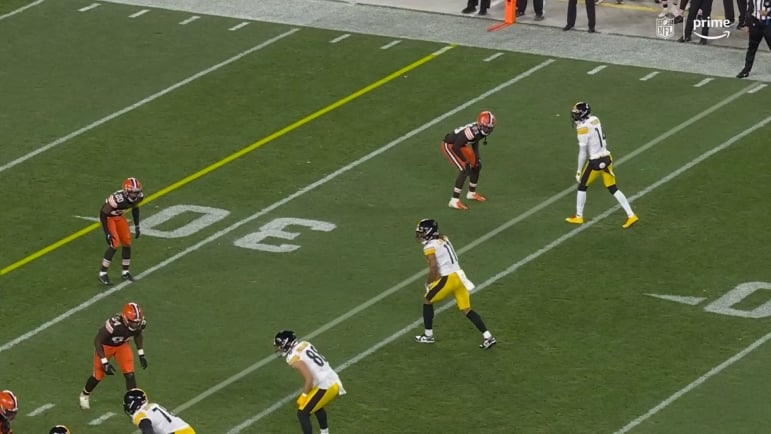The Pittsburgh Steelers managed to get a second-round pick for Chase Claypool, but a third for George Pickens. What happened, and why? If these are some of the questions that you have, given their talent disparity, I will attempt to answer them here. Why did the Steelers net more in compensation for a less talented player?
The elephant in the room is the behavioral factor. While Claypool gave the Steelers the occasional headache, George Pickens was a real headcase. Even when the team was thriving, he wasn’t necessarily happy.
Suffice it to say that NFL teams had more cause for concern over Pickens’ behavior than for Claypool’s. That’s one reason that a team destined to draft in the top 10 at best gave up a second-round pick for him. It also helps that Claypool flashed early in his career with the Steelers, while Pickens never topped five touchdowns in a season.
Despite all that, the NFL pretty much always viewed George Pickens as the more talented player—correctly, I might add. But hindsight reveals just how great that disparity was, which was less obvious at the time. One could have found excuses for why Claypool wasn’t making plays during his final season with the Steelers. They weren’t good excuses, but they were there.
Another factor is that Claypool still had a year and a half left on his contract, while Pickens had one. The Bears had more control over the player they were acquiring for the Steelers than the Cowboys do. If they wanted, they could have moved Claypool the following offseason via trade. For Dallas, their player is a free agent after their first season together.
It also doesn’t appear the Steelers encountered a bidding war for George Pickens. If you remember, the Bears had company in pursuing Chase Claypool. Competition always raises the price, and the Steelers only had one nibble on their line for Pickens. And general managers talk. They see what the results of other deals are, and what trading with the Steelers is like.
By all appearances, it also doesn’t seem the Steelers were actively shopping Claypool. In contrast, they were actually picking up the phone and calling people about Pickens. They planned to trade Pickens, as long as a decent offer presented itself. They never sought to trade Claypool, nor Martavis Bryant before him.
As in any business transaction, there are many variables that affect the price tag. The more buyers there are, the more you can sell a product for. The Steelers had multiple aggressive buyers for Claypool, and one somewhat passive buyer for Pickens. Claypool also offered more value in key aspects such as length of contract and demeanor.
That’s how the Steelers ended up with a third-round pick for George Pickens and a second-round pick for Chase Claypool. Yes, they also gained a pick swap in the fifth and sixth rounds in 2027. But at the same time, they also knew they were getting a much higher second-round pick for Claypool. Oh, and I guess we can’t end this article without pointing out the most obvious reason the Steelers fetched a higher pick for Claypool: a terrible misjudgment on the part of the Bears.








